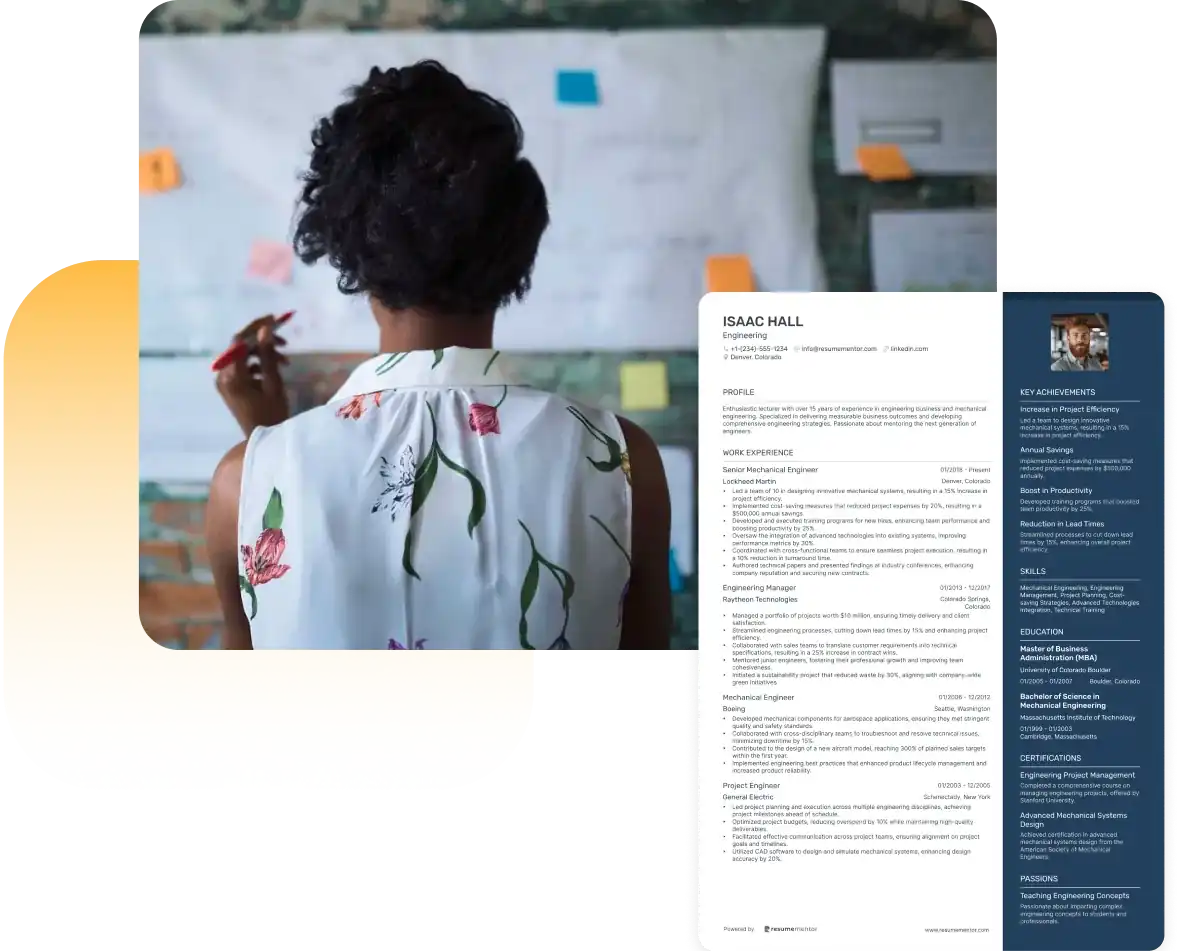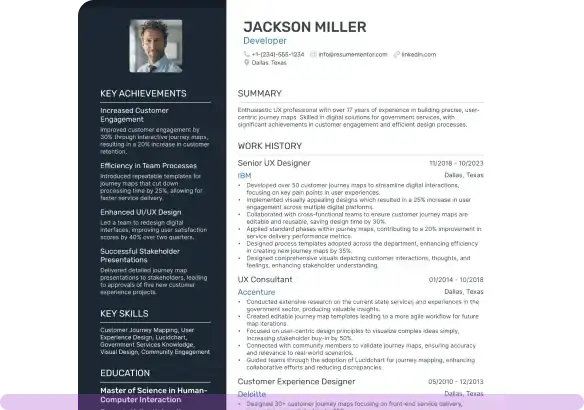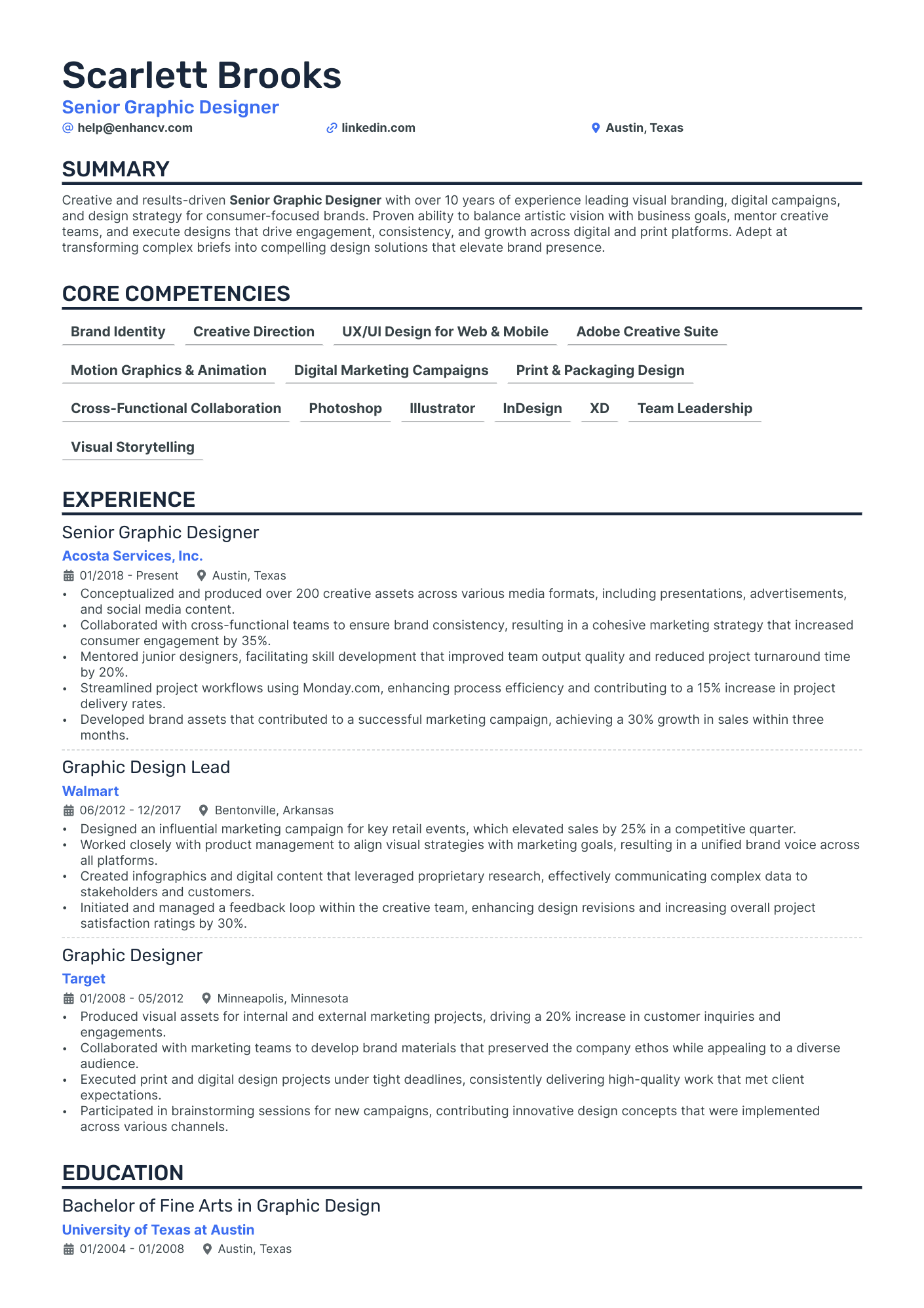The Perfect Resume Length: Nailing It Every Time

Oct 22, 2024
|
12 min read
Find the ideal resume length based on your experience and job goals—without overdoing it.
How long should a resume be? It’s one of the most common questions job seekers face—and in 2025, the answer still depends on your career stage, industry, and what you’re trying to showcase. Whether you're a recent graduate or a seasoned professional with 20 years of experience, finding the ideal resume length is about balance.
This guide will break down how long your resume should be, how far back your resume should go, and how to tailor resume length to your experience level—without overloading the page or cutting key content.
Key takeaways
- Most resumes should be 1–2 pages long.
- One page works best for early-career professionals.
- A two-page resume is ideal for 10+ years of experience.
- Always focus on relevance, not just quantity.
- Use the 10-year rule to determine how far back your resume should go.
How long should a resume be in 2025?
Short answer: One to two pages.
This range fits the majority of job seekers, providing enough space to show qualifications without overwhelming the reader. The length of your resume should reflect your career stage and how relevant your experience is to the job at hand.
In 2025, digital hiring systems are more advanced, with most companies using Applicant Tracking Systems (ATS) to screen resumes before they ever reach a human. These systems don’t penalize you for length—as long as the content is clear, keyword-optimized, and organized. That means a two-page resume won’t hurt your chances, but a bloated or unfocused one will.
In addition, hiring managers today are more receptive to non-traditional resume formats like skill-based resumes, hybrid formats, and even project portfolios. However, no matter the format, the question still arises: “How long should a professional resume be?” The answer is still guided by clarity, relevance, and structure.
Resume length by experience level
Entry-level or student
1 page | Focuses on education, skills, and internships
5–10 years of experience
1–2 pages | Highlights key accomplishments, career progression
10–20 years of experience
2 pages | Provides depth on recent roles and results
20+ years of experience
2–3 pages (max) | Summarizes early roles, emphasizes recent impact
Let’s now break down specific scenarios based on experience level to better understand what length makes sense for your situation.
How long should a resume be for 10 years of experience?
A two-page resume is often ideal if you’ve built up 10 years of experience.
This format allows room to show:
- Key accomplishments in recent roles.
- Leadership or management responsibilities.
- Measurable results and impact.
At the 10-year mark, your resume should evolve beyond a simple job list. This is your opportunity to show career progression, not just job history.
Think in terms of milestones:
- Have you led a team?
- Managed budgets?
- Increased performance metrics?
- Received promotions?
These are the kinds of achievements that warrant a second page—especially if you can support them with results.
It’s also a great time to begin trimming older roles. Jobs from the start of your career can be summarized in one line unless they offer skills directly related to your target position.
Here’s an example of such a resume.
Now let’s consider how your resume length should change if your career spans two decades or more.
How long should a resume be for 20 years of experience?
For those with long careers, two pages is still the standard. A third page can be appropriate for executives, researchers, or those in academia—but this is the exception, not the rule.
Strategies for seasoned professionals:
- Focus on the past 15 years. Unless you're applying for a C-suite role, employers rarely want to dig through two decades of job history. The most relevant experience is likely to be the most recent.
- Create an "Early Career Summary" section. This allows you to mention prior roles or industries without devoting full sections to each one.
- Use strategic grouping. If you held multiple similar positions across several companies, consider grouping them under a single heading to conserve space.
Sales Management Roles | 1999–2010
Regional Sales Manager – XYZ Corp.National Account Manager – ABC Inc.
Senior Sales Executive – DEF Ltd.
This method maintains credibility without overwhelming the page.
Before we get into broader resume guidelines, let’s take a moment to examine how formatting itself can influence resume length and impact.
Formatting considerations: How layout affects resume length
When deciding how long your resume should be, don't overlook resume format and visual impact. Smart formatting can make a one-page resume feel comprehensive or a two-page resume feel cluttered—depending on how you use space.
Bullet points
Use bullet points instead of long paragraphs. They improve information organization, make your achievements easier to skim, and help break content into readable chunks.
Font size and line spacing
Font size should be between 10 and 12 points for the body text. For section headers, a slightly larger size (14–16 pt) works well. Pair that with consistent line spacing (1.0 to 1.15) to keep your resume readable without artificially inflating the length.
Standard margins
Use standard margins of 0.5–1 inch on all sides. Larger margins may make a resume look sparse, while tiny margins may trigger printing issues or make the page feel overstuffed.
Text distribution
A resume with evenly spaced sections creates a stronger visual impact than one that's text-heavy in certain areas. Make sure your resume sections (like “Experience,” “Skills,” “Education”) are clearly defined and balanced.
Resume format choices
Different resume formats affect length and readability:
- Chronological resumes highlight work history, best for stable career paths
- Functional resumes focus on skills and achievements, useful for career changers
- Combination resumes offer a blend of both, ideal for many professionals in 2025
Let’s move from layout strategies to understanding how experience level plays a role in determining resume length.
How long should a professional resume be?
A professional resume should be long enough to showcase your value—but no longer.
Whether you’re a project manager, data analyst, teacher, or UX designer, the structure of your resume should elevate your achievements, not bury them in paragraphs.
Focus on:
- Results (quantified when possible).
- Skills aligned with the job description.
- Clarity and readability (bulleted lists help).
When recruiters scan a resume, they’re asking:
- Can this person do the job?
- Have they done similar work before?
- Do they show impact and growth?
PRO TIP
Your resume should answer all three within 6–10 seconds. If your resume forces a reader to “hunt” for the good stuff, it’s too long—or too unfocused.
Next, let’s explore the resume length norms for the average job seeker.
How long should a typical resume be?
A typical resume for most applicants lands between one and two pages.
It depends on your:
- Industry (tech and academia may allow longer formats)
- Experience level
- Target job
That said, norms are shifting. In highly technical or global fields, longer resumes are more accepted—especially when detailing certifications, publications, or project portfolios.
However, in corporate and administrative roles, the traditional 1–2 page format remains standard. Here, hiring managers value brevity, clarity, and direct alignment with job postings.
To know how far back to go on your resume, you’ll want to follow a proven rule of thumb.
How far back should a resume go?
Use the 10-year rule: Limit your work history to the last 10 years—unless prior experience is highly relevant.
Why it works:
- Reflects your current skill level.
- Aligns with the expectations of modern employers.
- Emphasizes your most transferable achievements.
The real question isn’t just “how far back should a resume go?” It’s: Which experience tells the best story about what I can do today?
If you’re changing careers or industries, you can break the 10-year rule strategically. For example, if you worked in software development 15 years ago and are now returning to tech, highlight that experience briefly—perhaps as part of a skills-based summary.
Let’s now look at the importance of trimming and shaping content to avoid resumes that are too dense or too sparse.
Why too long—or too short—can cost you
Striking the right resume length is about balance—too short leaves questions unanswered, too long loses your reader before they see your value.
Risks of a resume that's too short
- Lacks context or measurable outcomes.
- Doesn’t showcase career growth.
- Suggests limited experience (even if that’s not the case).
Risks of a resume that's too long
- Buries key info under irrelevant detail.
- Feels unfocused or overwhelming.
- Signals poor communication skills.
Finding the sweet spot
The goal isn’t to impress with length—it’s to communicate competence quickly. Think of your resume as a movie trailer. You’re not trying to show the entire plot—just enough to get someone interested in watching the full film.
Now that you know what to avoid, let’s dive deeper into what to prioritize.
Content prioritization: quality over quantity
One of the most overlooked elements of resume writing is content quality. It's tempting to list every responsibility you’ve ever had, but recruiters aren’t looking for a diary—they’re looking for relevance.
Focus on what matters
1. Experience over description
Rather than copying your job description, focus on what you achieved in each role. What problems did you solve? What results did you generate?
2. Highlight relevant skills
Use the job listing to identify the most important skills, and make sure your resume emphasizes them clearly.
3. Cut irrelevant details
If a job or duty doesn’t strengthen your application, remove it. Prioritize content that matches the job you want, not just the job you had.
4. Tell a strong career story
Your resume should provide a narrative arc that demonstrates growth, adaptability, and value—not just a static list of past positions.
With content prioritized, the next step is polishing and enhancing every line to make it count.
Expert tips: Making every word count
Want your resume to rise to the top of the stack?
Follow these resume-writing best practices:
Use active language
Don’t say: “Duties included overseeing team communications.”
Do say: “Streamlined communication across 3 departments, improving delivery times by 15%.”
Quantify everything
Hiring managers love numbers.
Examples:
“Reduced call resolution time by 22%.”
“Managed $1.2M annual budget.”
“Trained 45+ new hires.”
Tailor for each application
Use keywords from the job listing and mirror the language the employer uses.
Keep formatting simple
Avoid fancy fonts, colors, or graphics unless you're in a design-forward industry. Stick to clean, legible templates that work well with ATS.
Use sections strategically
Conclusion
So, how long should a resume be in 2025?
Stick to one to two pages, tailor it to your career stage, and make every word earn its spot. Whether you’re asking how long a resume should be for 10 years of experience or wondering how far back your resume should go, the answer comes down to clarity, relevance, and results.
Need help crafting your perfect-length resume? Try Resume Mentor’s Resume Builder for expert-backed templates that make it easy to highlight your value—without the fluff.
Related Articles

Continue Reading
Check more recommended readings to get the job of your dreams.
Resume
Resources
Tools
© 2025. All rights reserved.
Made with love by people who care.

